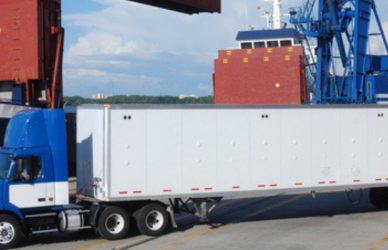Navigating a DOT inspection as a truck driver can feel like a scary experience, disrupting your delivery schedule and potentially revealing compliance issues that could lead to penalties. It’s important to remember, however, that these inspections are crucial for maintaining road safety standards. There are six levels of DOT roadside inspections, each with its unique requirements. It’s imperative for truck drivers to be well-versed in these inspection levels to ensure a smooth and successful process while staying on the right side of the law.
Level One: North American Standard Inspection
The Level One inspection, also known as the North American Standard Inspection, is the most comprehensive and thorough of all levels. Comprising 37 detailed steps, this inspection scrutinizes both the driver’s credentials and the vehicle.
- During a Level One inspection, the following aspects are scrutinized:
- Medical examiner’s certificate
- Alcohol and drug use
- Daily logs
- Hours of Service (HOS) documentation
- Seat belt usage
- Driver and vehicle inspection reports
- Brake systems
- Coupling devices
- Exhaust systems
- Truck frame
- Fuel systems
- Turn signals
- Brake lamps
- Tail lamps
- Headlamps
- Lamps on projecting loads
- Safe loading
- Steering mechanisms
- Suspension
- Tires
- Van and open-top trailer bodies
- Wheels and rims
- Windshield wipers
- Hazardous materials (HM) requirements (for hazmat haulers)
Level Two: Walk-Around Driver/Vehicle Inspection
Level Two inspections are less invasive and more common than Level One inspections. They closely resemble Level One inspections, with the key difference being reduced involvement in vehicle inspection. During Level Two inspections, examiners perform a walk-around driver/vehicle inspection without physically getting under the vehicle.
Level Three: Driver-Only Inspection
Level Three inspections are the second most common type and are considerably quicker as they do not involve examining the vehicle. During these inspections, drivers are required to present:
Record of Duty Status (RODS)
- Driver’s license
- HAZMAT requirements
- Medical card and waiver
- Skill Performance Evaluation (SPE) certificate
- Vehicle Inspection Report
- HM/DG requirements
- HOS documentation
Level Four: Special Inspections
Level Four inspections are unique in that they are one-time inspections designed to look into specific trends within the trucking industry. These inspections occur when the Department of Transportation seeks to conduct further research on industry-related issues.
Level Five: Vehicle-Only Inspection
Similar to Level One inspections, Level Five inspections do not require the driver’s presence. During these inspections, examiners scrutinize all aspects covered in Level One inspections, but without focusing on driver-related elements.
Level Six: Enhanced NAS Inspection for Radioactive Shipments
Level Six inspections pertain exclusively to drivers transporting radioactive materials. These inspections are vital to ensure that drivers comply with the strict safety protocols associated with radioactive material transportation.
What else do you need to know about DOT inspections? Below, we’ve outlined a few key points to help ensure you’re ready for your next inspection.
Common Reasons for DOT Inspections
DOT inspections can occur for various reasons. Common triggers include random selection, safety concerns based on a driver’s history of violations or incidents, and vehicle inspections that aim to ensure proper maintenance. Understanding these reasons can help drivers anticipate and prepare for inspections.
Preparing for a DOT Inspection
Adequate preparation can make a significant difference during a DOT inspection. Truck drivers should maintain accurate records of their daily logs, hours of service, and vehicle maintenance. Regular vehicle inspections, conducted by the driver or fleet mechanics, can help identify and address issues before they become violations. Being proactive in addressing potential concerns can lead to smoother inspections and fewer penalties. It should go without saying, but never skip your pre-trip!
Driver’s Rights and Responsibilities
It’s crucial for drivers to know their rights and responsibilities during a DOT inspection. Drivers have the right to review the inspection report and to ask questions if they are unsure about a violation or the process. Drivers are still responsible for cooperating with the inspectors regardless, however, providing required documentation, and addressing any issues promptly and professionally.
What to Do During an Inspection
When pulled over for a DOT inspection, drivers should remain calm and courteous. Cooperation and compliance are key. They should be prepared to present their credentials and documents when requested and answer questions from the inspectors. If a violation is identified, drivers should follow the proper procedures to address it, which may involve contesting the violation or addressing it through compliance measures.
Penalties for Non-Compliance
Non-compliance during a DOT inspection can have serious consequences. Depending on the nature and severity of the violations, penalties may include fines, citations, out-of-service orders, and, in extreme cases, suspension of driving privileges. Understanding these potential penalties underscores the importance of compliance and preparation.
Mastering the six levels of DOT inspections is paramount for every truck driver. These inspections, though occasionally inconvenient, are a vital component of road safety, ensuring that both drivers and the general public remain protected on our highways. By understanding the different inspection levels, preparing diligently, knowing their rights and responsibilities, and learning from the experiences of others, truck drivers can confidently face these assessments.
It’s not just about compliance with the law; it’s about guaranteeing the safety of all who share the road. So, stay informed, stay proactive, and stay safe out there. By doing so, truck drivers can navigate DOT inspections with confidence and professionalism, contributing to a safer and more reliable transportation industry.











